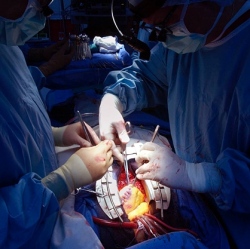
Organovo is set to begin selling 3D-printed liver tissue by the end of the year, part of the growing movement to bring the technology to the medical field. Organovo can’t yet print a fully functioning liver, but the company has already been working with a handful of laboratories to manufacture live liver tissue, offering scientists a new way to conduct research.
"This gives researchers the kind of tool that they just haven’t had in the past," said Michael Renard, executive vice president at Organovo. "They can’t do the kind of experiments on a person that they can do with this tissue in a lab setting." Within the next few years, Renard says 3-D-printed tissues could also be used in patient treatment, to replace small parts or organs or encourage cell regeneration.
So how do you print human tissue? The process starts when scientists grow human cells from biopsies or stem cells. They then feed the cells into special printers that can arrange them three-dimensionally by cell type in the way that they’d appear in the human body. Once the cells have been printed in the right arrangement, they begin to signal to one another, fuse and organize themselves into a collective system.
